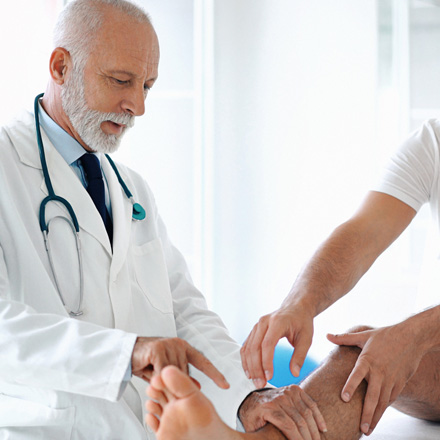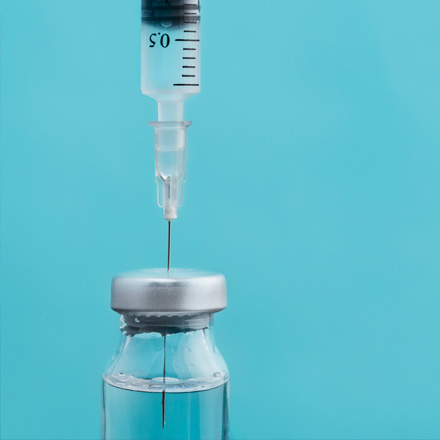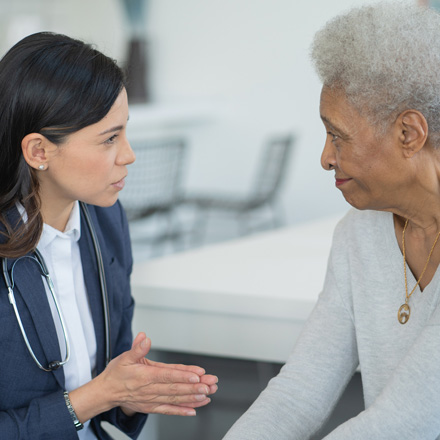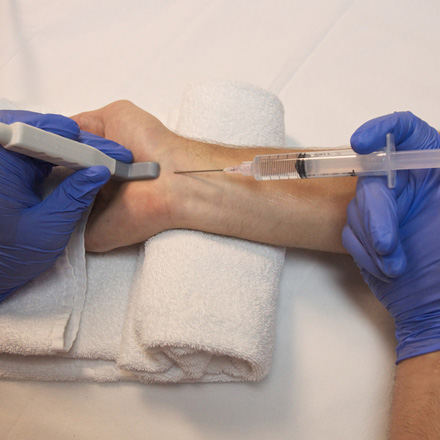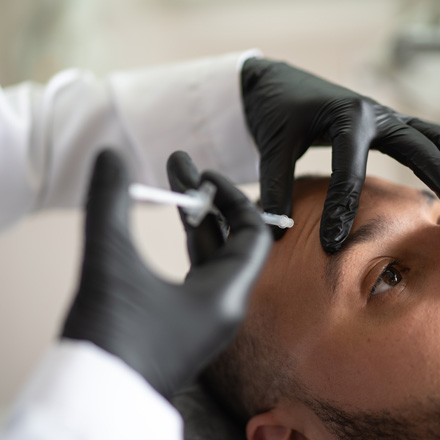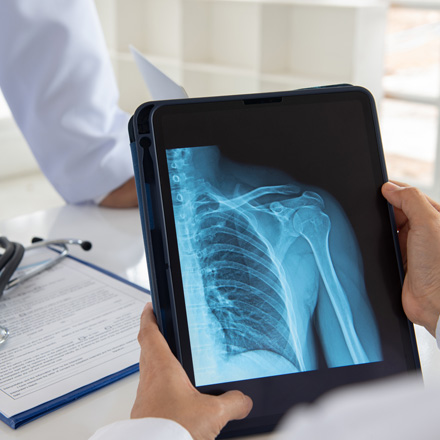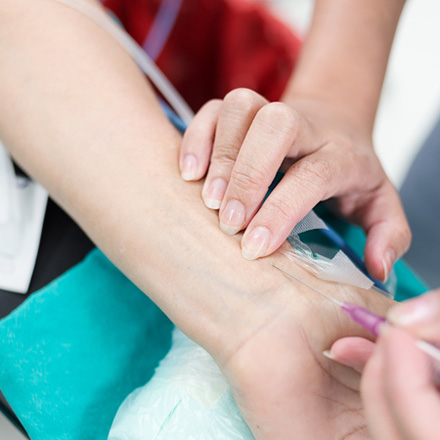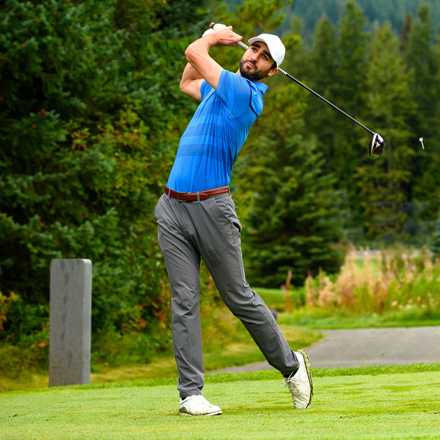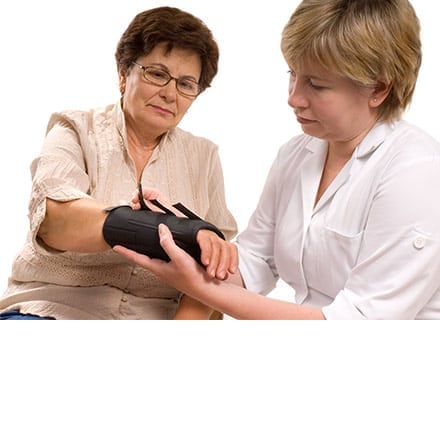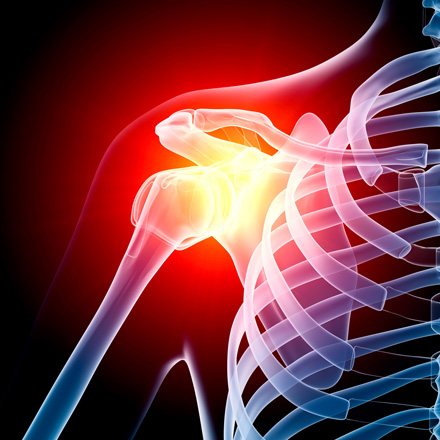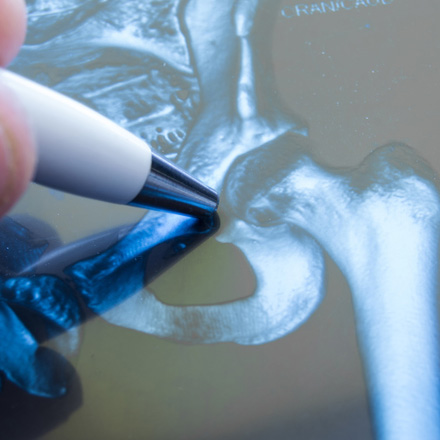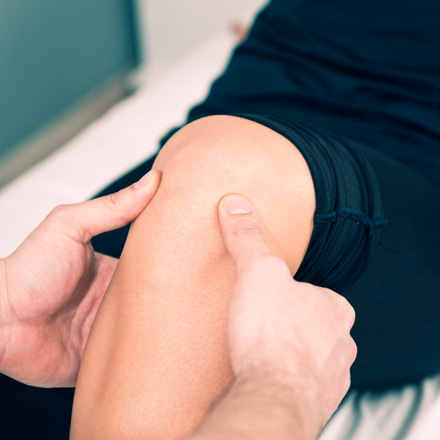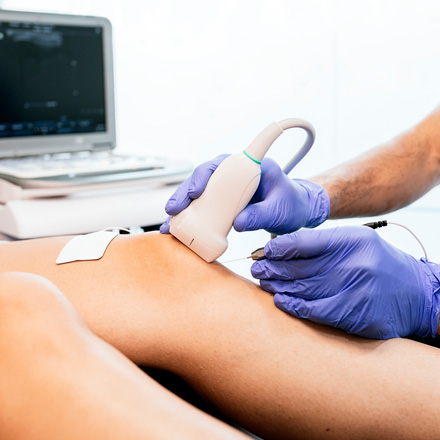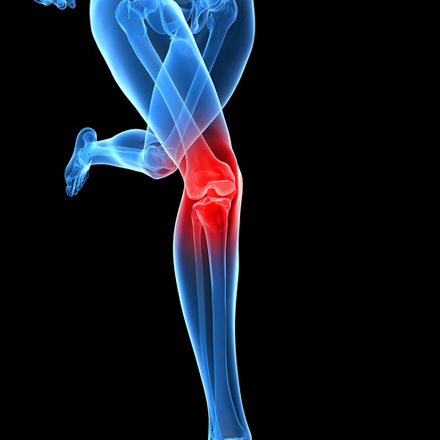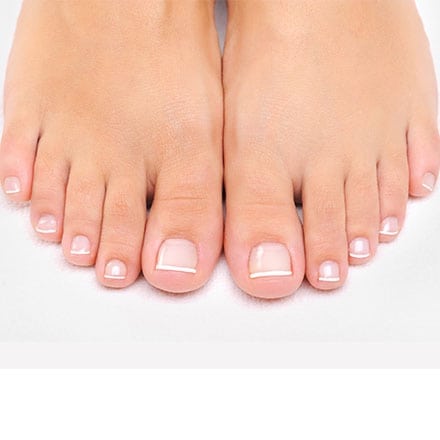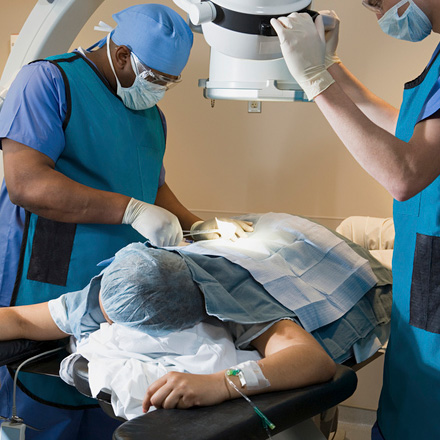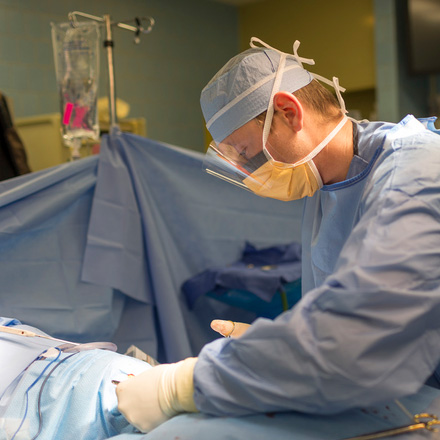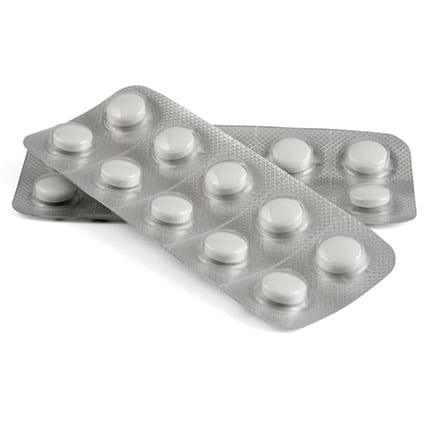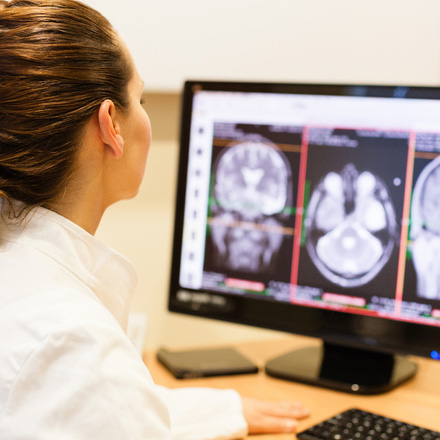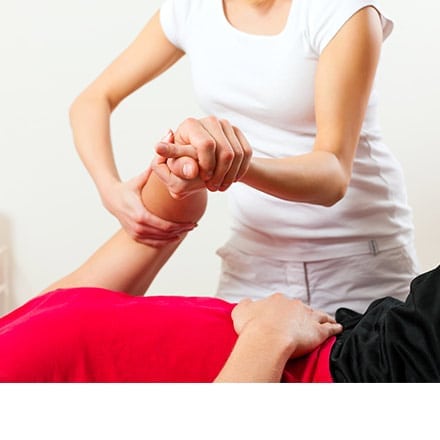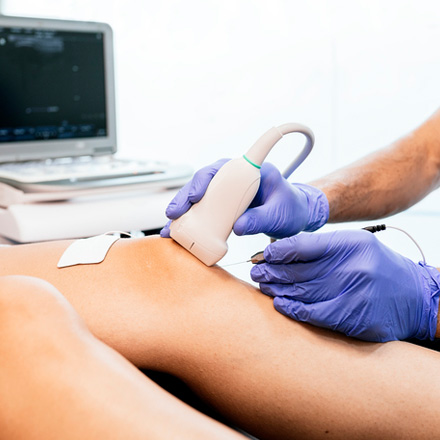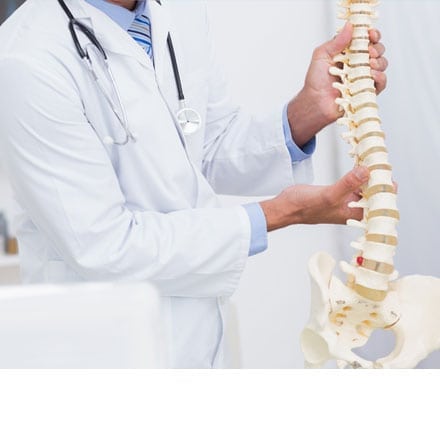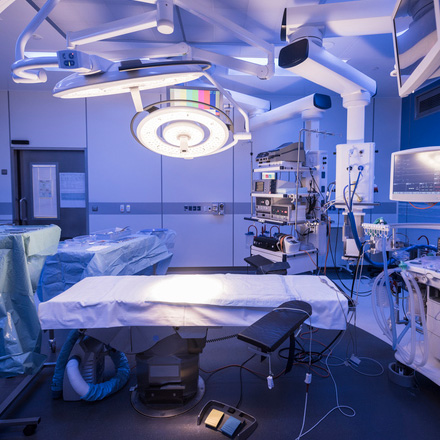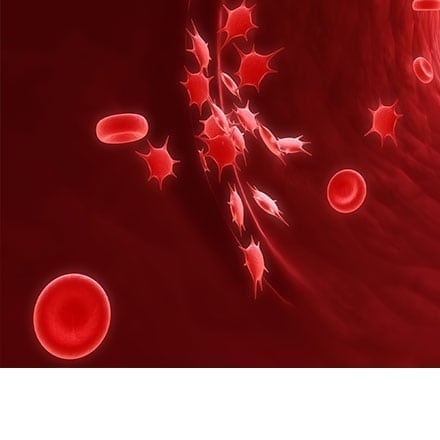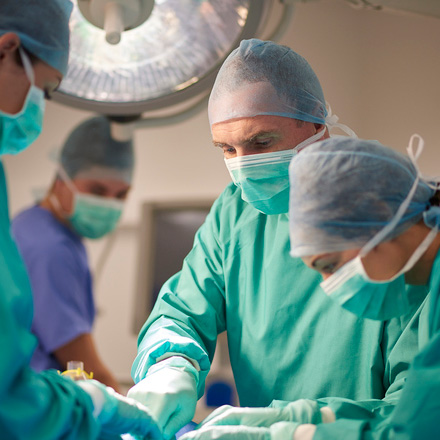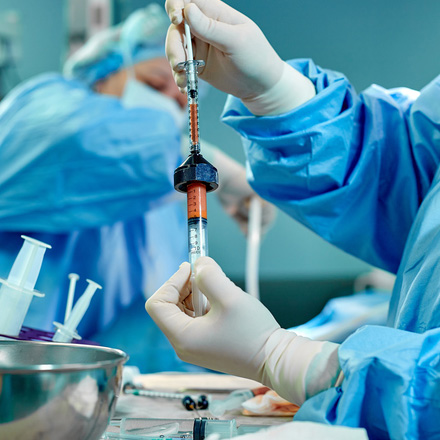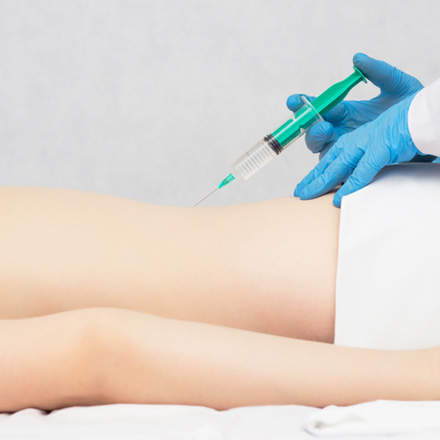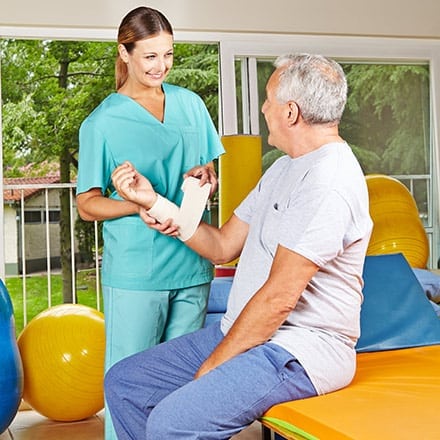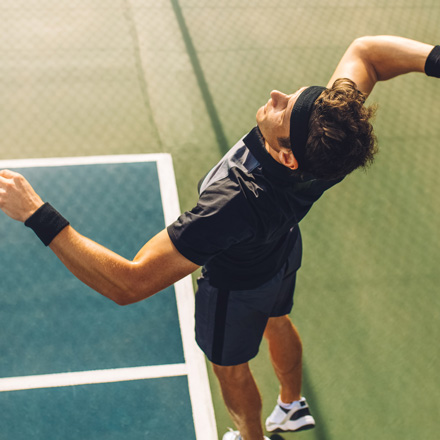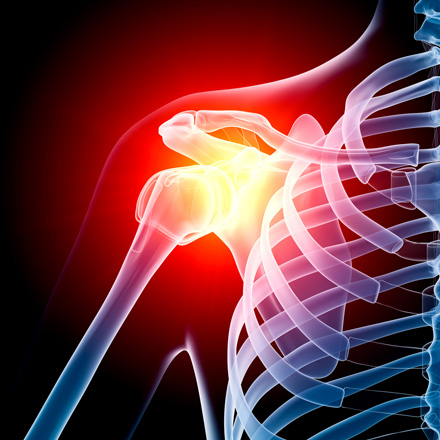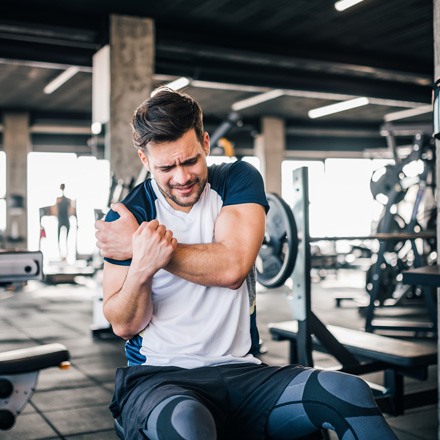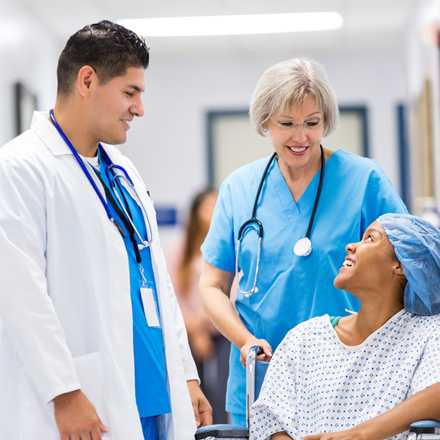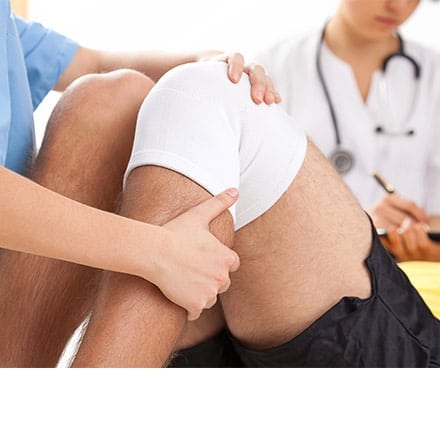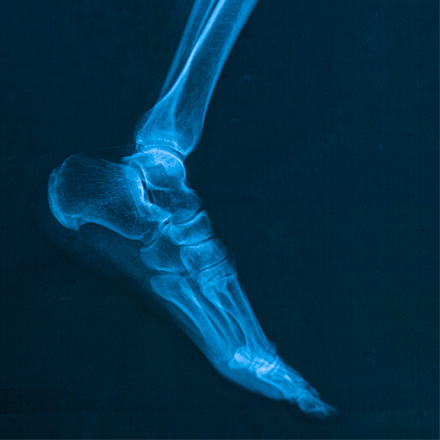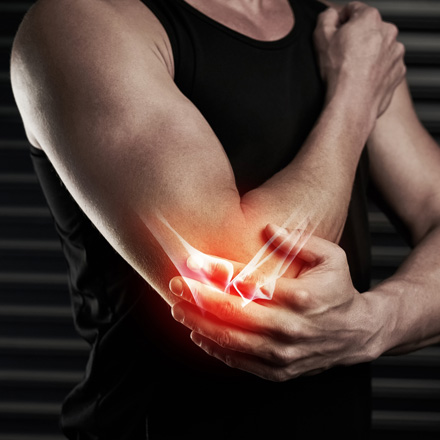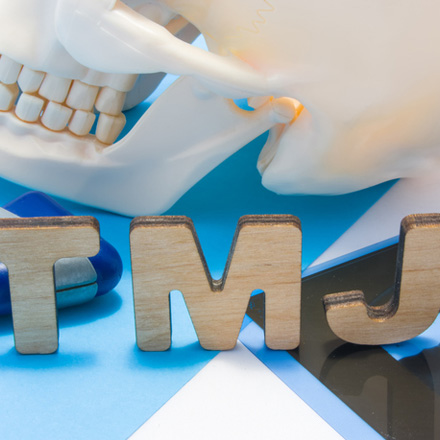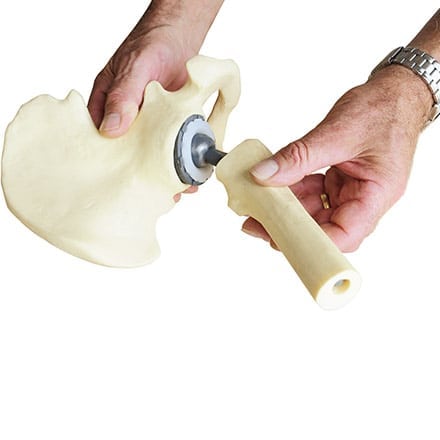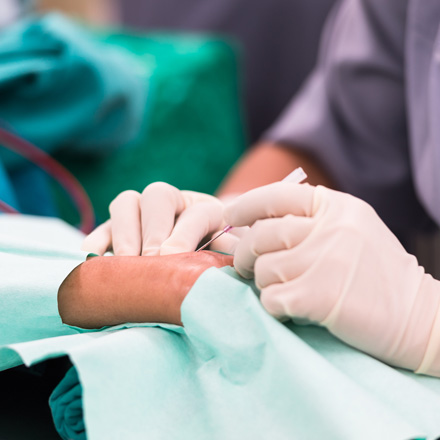Ankle Pain
Ankle pain may be caused by an injury, such as a sprain, or a medical condition. Ankle sprains occur when ligaments are torn or overstretched, making up 85 percent of all ankle injuries.
Back & Neck Myofascial Pain
Myofascial pain syndrome is a condition in which pressure on trigger points causes pain in the muscles, sometimes in parts of the body that seem unrelated. Pain associated with myofascial pain syndrome persists or becomes worse over time.
Baker’s Cyst
The knee naturally produces a lubricating fluid, called synovial fluid, to help the leg move smoothly and reduce friction between the different parts of the knee. A problem with the knee joint, such as arthritis or a cartilage tear, may cause the knee to produce too much fluid and lead to a condition called Baker’s cyst.
Biceps Tendenosis
Biceps tendonitis may be caused by overuse, sudden heavy load or repetitive motion, leading to micro tears in the tendon. Athletes such as baseball players, swimmers, tennis players and golfers are at increased risk of tendonitis in their shoulders, arms and elbows.
Carpal Tunnel Syndrome
Carpal tunnel syndrome is caused by the compression of the median nerve as it passes into the hand. The carpal tunnel is a passageway located on the palm side of the hand. The median nerve is located in the carpal tunnel and provides the ability to feel the fingers.
Chronic Migraines
A chronic migraine involves experiencing more than 15 headache days per month over a three-month period, with at least 8 headache days involving a migraine. When speaking to a doctor, patients should discuss any underlying conditions that may be causing the headaches.
Collarbone/Shoulder Pain
The collarbone is a slightly S-shaped bone that connects the breastbone to the shoulder. Cartilage connects one side of the collarbone to the acromion, which is a part of the shoulder bone. This connection is called the acromioclavicular joint.
De Quervain’s Tenosynovitis
De Quervain’s tenosynovitis is a condition that causes pain or swelling of the tendons near the base of the thumb. The tendons affected include the abductor pollicis longus and the extensor pollicis brevis. Individuals with this condition experience pain when turning their wrist, trying to hold something or making a fist.
Epicondylagia
Epicondylagia, also known as golfer’s elbow, is a condition that causes pain on the inside of the elbow. The pain may also spread into the forearm and wrist. Though the condition is common in golfers, individuals involved in other sports or repetitive activities may also develop epicondylagia.
Evaluations
At Orange County Orthopedic Group, a thorough diagnosis is an important part of determining that treatment that you need. This process involves gaining a lot of information through questions about your medical history, your pain, physical examinations, and diagnostic tests that can provide a fuller picture.
Frozen Shoulder
Also known as adhesive capsulitis, frozen shoulder is a condition in which the tissues in the shoulder joint become thick and tight, limiting the shoulder’s range of motion. The condition develops in three stages, lasting a total of two to nine months.
Hip Osteoarthrits
Hip osteoarthritis is a form of arthritis affecting the hip. The condition develops when the protective cartilage that cushions the bones wears down. The damage to the joints can’t be reversed, but symptoms can be managed.
Iliotibial Band Syndrome
The iliotibial (IT) band, also known as the iliotibial tract or Maissiat’s band, is a group of fibers that run along the upper leg, from the hip to the top of the shin.
The IT band helps to extend, abduct and rotate the hip as well as stabilize and move the side of the knee.
Jumper’s Knee
Jumper’s knee, also known as patellar tendonitis, is a condition that develops as a result of repetitive stress on the knee, leading to pain and inflammation of the tendon that connects the kneecap (patella) to the shinbone (tibia).
Knee Pain
Knee pain affects individuals of all ages and can be a sign of a variety of conditions, such as arthritis, gout and infections. Minor knee pain usually resolves with self-care. More serious injuries may require physical therapy, knee braces, steroid injections or surgery.
Laser Fungus Treatment
Topical medications have trouble penetrating the nail plate to reach the underlying fungal infection that is located in the nail bed, and oral antifungal medications, while more effective than topical, have certain side effects.
Lumbar Facet Pain
Lumbar facet pain may be caused by a dysfunction at the L4-L5 or L5-S1 joints of the spine. Individuals with lumbar facet syndrome experience irritation of the posterior part of the lumbar spine, which may lead to swelling of the surrounding structures.
Lumbar Radiculopathy After Fusion
Patients who undergo spinal fusion surgery may experience lumbar radiculopathy some time afterwards. The surgery may have been successful, but the patient may develop conditions unrelated to the surgery, such as lumbar radiculopathy.
Medications
Medications are often used to reduce pain and inflammation. Any medication suggested or prescribed by one of the doctors at Orange County Orthopedic Group will involve direct care and supervision, and will also likely be part of a multifaceted treatment plan.
Occipital/Cervicogenic Headaches
A cervicogenic headache is a type of headache that involves feeling pain in a part of the body that is not the true source of the problem. An occipital cervicogenic headache can be caused by a disorder in the occipital (back of head) region.
Orthopedic Care
Orthopedic care encompasses several different options. In addition to joint replacement, medications, and surgical procedures, the options for treatment at Orange County Orthopedic Group can include…
Osteoarthritis
Osteoarthritis is a condition that develops when the protective cartilage that cushions the bones wears down. The damage to the joints can’t be reversed, but symptoms can be managed.
Outpatient Laser Spine Surgery
Even with surgery often being a last resort for most patients, it’s comforting to know that many spine conditions can be treated with less invasive procedures. Laser spine surgery combines the strategic….
Perineal Pain/Pudendal Entrapment Neuropathy
Pudendal Nerve Entrapment (PNE) is a condition that results from the compression or pinching of the pudendal nerve. PNE causes chronic pain in the perianal, perineal and genital areas.
Platelet Rich Plasma
Platelet rich plasma (PRP) therapy is commonly used by athletes in order to speed up the healing of joint-related sports injuries. However, it is quickly becoming a pain management option for non-athletes who want to experience the ways that blood platelets can ease pain that is related to tendon and joint problems and injuries.
Post-Surgical Pain
Each year, more than 45 million surgical procedures are performed in the U.S. Acute postoperative pain will develop into persistent postoperative pain (PPP) in an estimated 10-50% of individuals after common operations.
Postherpetic Shingle Neuralgia
Postherpetic shingle neuralgia is a condition that affects nerve fibers and skin, causing burning pain long after the rash and blisters of shingles are gone. Symptoms of Postherpetic Shingle Neuralgia
Radiculopathy
Radiculopathy is a term used to describe the symptoms produced by the pinching of a nerve root in the spinal column. Lumbar radiculopathy occurs in the lower back and is also referred to as sciatica.
Rehabilitation
Rehabilitation involves helping you to recover entirely after an injury or surgery. During rehabilitation, we will work to restore your flexibility and range of motion. In some cases, this will involve psychologically and socially helping you to recover.
Rotator Cuff Injury
The shoulder is stabilized by a group of four muscles and tendons known as the rotator cuff. A rotator cuff injury can be diagnosed as a strain, tendinitis or bursitis. Some injuries are caused by accidents or overuse, while others are caused by degenerative conditions.
Shoulder Bursitis
Shoulder bursitis is a condition in which the tendons and bursa become irritated and inflamed. The bursa is a fluid-filled sac located between the top of the arm bone and the tip of the shoulder. When this space becomes too narrow for normal motion, the tendons and bursa swell, further diminishing the space for movement.
Shoulder Joint Pain
The shoulder has two main joints: the acromioclavicular joint and the glenohumeral joint, also known as the shoulder joint. The acromioclavicular joint is located between the clavicle and the highest part of the scapula. The glenohumeral (GH) joint is made up of the top, ball-shaped part of the humerus bone and the outer edge of the scapula.
SI Joint Pain
Sacroiliac (SI) joint pain is a sharp, stabbing pain that radiates from the hips and pelvis, down to the thighs and up to the lower back. SI joint pain is responsible for 15 to 30 percent of cases of chronic lower back pain.
Surgery
There are some orthopedic conditions that are not effectively treated with non-surgical methods. Usually, this applies to conditions with severe pain that aren’t helped with icing, bracing, medications, physical therapy, and other types of orthopedic care. In these situations, surgery might be the best choice.
Tarsal Tunnel Syndrome
Tarsal tunnel syndrome is a condition caused by damage to the posterior tibial nerve as a result of repeated pressure and compression. The tibial nerve is located near the ankle, runs through the tarsal tunnel (which is a passageway inside the ankle) and branches off of the sciatic nerve.
Tennis & Golfer’s Elbow
Golfer’s elbow (flexor tendinopathy) is a condition that causes pain on the inside of the elbow, while tennis elbow (extensor tendinopathy) causes pain on the outside of the elbow. Tennis players and individuals who repeatedly use their wrists or clench their fingers are also at risk of developing golfer’s elbow.
TMJ Arthropathy
Temporomandibular joint (TMJ) arthropathy is a disorder of the nerves and jaw muscles caused by injury of inflammation to the temporomandibular joint. The TMJ connects the jawbone and the skull.
Total Joint Replacement
At Orange County Orthopedic Group, we perform joint replacements for patients who are not finding relief through other methods. Oftentimes, joint problems are so extensive that it is difficult to continue everyday activities or go through the day without pain. Sometimes, shoulder, knee, or hip replacement is necessary.
Trigger Finger
Trigger finger is a condition that makes it difficult to straighten and bend the finger. The finger may bend or straighten with a snap, like a trigger being pulled and released. Trigger finger occurs when inflammation narrows the space within the sheath that surrounds the tendon in the affected finger.

